#how to increase conversion rate facebook ads
Video
undefined
tumblr
The conversion rate is the number of people visiting your #website versus those completing any given activity. This conversion rate gives you an idea of how responsive and interactive your website is. The way your website is designed can significantly impact your conversion rate. Therefore, if you want to increase website conversion rate, you can use the following methods to optimize your website. To read this article in detail, visit: https://www.womleadmag.com/tips-to-increase-website-conversion-rate/
#Website Conversion Rate#sales#How can you improve conversion rates on your website?#How do you optimize conversion rate?#What is a good conversion rate for a website?#conversion rate#how to increase conversion rate facebook ads#what is conversion rate#increase conversion rates meaning#how to improve conversion rate shopify#how to increase conversion rate in sales#how to increase conversion rate in digital marketing#how to increase conversion rate on-site#how to improve conversion rate in google ads
0 notes
Text

I spent the last 11 months working with my illustrator, Marta, to make the children's book of my dreams. We were able to get every detail just the way I wanted, and I'm very happy with the final result. She is the best person I have ever worked with, and I mean, just look at those colors!

I wanted to tell that story of anyone's who ever felt that they didn't belong anywhere. Whether you are a nerd, autistic, queer, trans, a furry, or some combination of the above, it makes for a sad and difficult life. This isn't just my story. This is our story.

I also want to say the month following the book's launch has been very stressful. I have never done this kind of book before, and I didn't know how to get the word out about it. I do have a small publishing business and a full-time job, so I figured let's put my some money into advertising this time. Indie writers will tell you great success stories they've had using Facebook ads, so I started a page and boosting my posts.
Within a first few days, I got a lot of likes and shares and even a few people who requested the book and left great reviews for me. There were also people memeing on how the boy turns into a delicious venison steak at the end of the book. It was all in good fun, though. It honestly made made laugh. Things were great, so I made more posts and increased spending.

But somehow, someway these new posts ended up on the wrong side of the platform. Soon, we saw claims of how the book was perpetuating mental illness, of how this book goes against all of basic biology and logic, and how the lgbtq agenda was corrupting our kids.

This brought out even more people to support the book, so I just let them at it and enjoyed my time reading comments after work. A few days later, then conversation moved from politics to encouraging bullying, accusing others of abusing children, and a competition to who could post the most cruel image. They were just comments, however, and after all, people were still supporting the book.



But then the trolls started organizing. Over night, I got hit with 3 one-star reviews on Amazon. My heart stopped. If your book ever falls below a certain rating, it can be removed, and blocked, and you can receive a strike on your publishing account. All that hard work was about to be deleted, and it was all my fault for posting it in the wrong place.


I panicked, pulled all my posts, and went into hiding, hoping things would die down. I reported the reviews and so did many others, but here's the thing you might have noticed across platforms like Google and Amazon. There are community guidelines that I referenced in my email, but unless people are doing something highly illegal, things are rarely ever taken down on these massive platforms. So those reviews are still there to this day. Once again, it's my fault, and I should have seen it coming.
Luckily, the harassment stopped, and the book is doing better now, at least in the US. The overall rating is still rickety in Europe, Canada, and Australia, so any reviews there help me out quite a lot.
I'm currently looking for a new home to post about the book and talk about everything that went into it. I also love to talk about all things books if you ever want to chat. Maybe I'll post a selfie one day, too. Otherwise, the book is still on Amazon, and the full story and illustrations are on YouTube as well if you want to read it for free.
#books#reading#childrens books#lgbtq#lgbtqia#autism#transgender#furry#therian#art#deer#queer#artists on tumblr#creativity#illustration
3K notes
·
View notes
Text

In the bustling world of e-commerce, standing out can be both a challenge and an opportunity for small businesses. Crafting a well-rounded marketing plan is essential to gaining visibility, driving sales, and building a loyal customer base. Whether you're just starting out or looking to refine your existing strategies, a structured marketing plan can set the foundation for success. Here’s a comprehensive guide to developing a marketing plan tailored for a small e-commerce business.
Understand Your Market and Audience
Before diving into marketing tactics, it's crucial to have a deep understanding of your market and target audience. Conduct market research to identify your ideal customers, their needs, preferences, and shopping behaviors. Use surveys, interviews, and social media insights to gather data. Analyze your competitors to understand their strengths, weaknesses, and the market gaps you can exploit.
Key Questions to Answer:
Who are your ideal customers?
What are their pain points and needs?
How do they prefer to shop online?
What are your competitors doing well, and where are their shortcomings?
Define Your Unique Value Proposition (UVP)
Your Unique Value Proposition (UVP) differentiates your business from competitors. It should clearly articulate why customers should choose your products or services over others. Your UVP should focus on the unique benefits and features of your offerings, such as superior quality, exceptional customer service, or exclusive products.
Steps to Develop a UVP:
Identify what makes your products or services unique.
Highlight benefits that resonate with your target audience.
Communicate your UVP clearly across all marketing channels.
Set Clear Marketing Objectives
Setting clear and measurable marketing objectives is essential for tracking progress and ensuring that your efforts align with your business goals. Objectives might include increasing website traffic, boosting conversion rates, or growing your social media following.
SMART Objectives:
Specific: Clearly define what you want to achieve.
Measurable: Ensure you can track progress (e.g., increase website traffic by 30%).
Achievable: Set realistic goals based on your resources.
Relevant: Align objectives with broader business goals.
Time-bound: Set a timeline for achieving each objective.
Choose Your Marketing Channels
Selecting the right marketing channels depends on where your target audience spends their time. A mix of channels often works best, but it's essential to focus on those that will yield the highest returns.
Key Channels to Consider:
Social Media: Platforms like Facebook, Instagram, and Pinterest are excellent for brand building and driving traffic. Tailor your content to each platform’s audience and features.
Email Marketing: Build and nurture an email list with personalized and targeted campaigns. Regular newsletters, promotional offers, and abandoned cart reminders can drive sales and customer retention.
Content Marketing: Create valuable content such as blog posts, videos, and infographics that address your audience’s pain points and interests. Quality content can drive organic traffic and establish your brand as an industry authority.
Search Engine Optimization (SEO): Optimize your website and content for search engines to increase organic traffic. Focus on relevant keywords, high-quality content, and a user-friendly website structure.
Paid Advertising: Invest in pay-per-click (PPC) campaigns on Google Ads or social media ads to drive targeted traffic. Utilize retargeting strategies to convert previous visitors into customers.
Develop a Content Strategy
A well-planned content strategy helps in creating engaging and relevant content that attracts and retains your target audience. Your content should align with your brand’s voice and address the needs and interests of your audience.
Content Strategy Components:
Content Calendar: Plan your content in advance to ensure consistency. Include blog posts, social media updates, email campaigns, and other content types.
Content Types: Diversify your content with articles, videos, infographics, and user-generated content.
Engagement: Encourage interaction through comments, shares, and feedback. Respond to customer inquiries and engage with your audience to build relationships.
Leverage Analytics and Track Performance
Monitoring and analyzing your marketing efforts is crucial for understanding what works and what needs adjustment. Use analytics tools to track key performance indicators (KPIs) such as website traffic, conversion rates, and customer acquisition costs.
Analytics Tools:
Google Analytics: Track website traffic, user behavior, and conversion rates.
Social Media Insights: Analyze engagement metrics on social media platforms.
Email Marketing Metrics: Monitor open rates, click-through rates, and conversion rates from email campaigns.
Regularly review your performance data, compare it against your objectives, and adjust your strategies accordingly. Continuous optimization based on data insights will help you stay competitive and achieve better results.
Budget Wisely
A well-defined budget ensures that you allocate resources effectively across different marketing channels. Determine how much you can invest in each area and prioritize spending based on potential return on investment (ROI).
Budgeting Tips:
Allocate Funds: Distribute your budget across channels that align with your goals and audience.
Track Spending: Monitor your expenses to avoid overspending and ensure efficient use of resources.
Adjust as Needed: Be flexible and adjust your budget based on performance and changing priorities.
Build Strong Customer Relationships
Customer retention is as important as acquiring new customers. Focus on building strong relationships through excellent customer service, personalized experiences, and loyalty programs.
Retention Strategies:
Personalization: Tailor recommendations and communications based on customer behavior and preferences.
Loyalty Programs: Reward repeat customers with discounts, points, or exclusive offers.
Customer Feedback: Encourage and act on customer feedback to improve your products and services.
Adapt and Innovate
The e-commerce landscape is constantly evolving, and so should your marketing strategies. Stay informed about industry trends, new technologies, and changing customer preferences. Be prepared to adapt and innovate to remain competitive and meet your customers’ evolving needs.
Staying Ahead:
Industry Trends: Follow industry news and trends to stay updated.
Emerging Technologies: Explore new technologies and tools that can enhance your marketing efforts.
Customer Feedback: Continuously gather and act on customer feedback to improve your offerings.
Conclusion
Developing a comprehensive marketing plan for your small e-commerce business involves understanding your market, defining your UVP, setting clear objectives, and choosing the right channels. By creating a strategic content plan, leveraging analytics, budgeting wisely, and focusing on customer relationships, you can drive growth and achieve success. Remember, a successful marketing plan is dynamic and should evolve based on performance and market changes. Embrace innovation and stay adaptable to build a thriving e-commerce business.
2 notes
·
View notes
Text
How Social Media Marketing Works?

Understanding Social Media Marketing: How It Works to Boost Your Online Presence
In today’s digital age, social media marketing has become an indispensable tool for businesses aiming to expand their reach, engage with their audience, and build a strong online presence. Whether you’re a small business owner, a marketer, or an entrepreneur, understanding how social media marketing works is crucial to your success. This guide will break down the mechanics of social media marketing, explaining its key components and offering insights into how you can leverage it to grow your brand.
For More Digital Marketing Tips Click Here
What Is Social Media Marketing?
Social media marketing involves using platforms like Facebook, Instagram, Twitter, LinkedIn, and others to promote your products, services, or brand. It’s a strategy that allows you to connect with your audience where they spend a significant amount of their time—on social media. By creating and sharing content tailored to your target audience, you can increase brand awareness, generate leads, and drive sales.
The Core Components of Social Media Marketing
Content Creation:
Content is the foundation of social media marketing. To captivate and engage your audience, you need to produce content that speaks directly to their interests and needs. This can include a variety of formats such as posts, videos, stories, and live streams. Effective content should not only be visually appealing and informative but also consistent with your brand’s voice and core values. The goal is to create material that resonates with your audience and encourages interaction
Audience Engagement:
Social media is more than a platform for broadcasting your message; it’s a space for meaningful interaction. Engaging with your audience involves actively responding to comments, joining conversations, and addressing their concerns. This two-way communication helps build trust, strengthens relationships, and fosters a sense of community around your brand. By showing that you value and listen to your audience, you enhance their connection to your brand and encourage ongoing engagement.
Social Media Advertising:
Paid advertising on social media platforms allows you to target specific demographics, interests, and behaviors. This level of precision ensures that your content reaches the people who are most likely to be interested in your products or services. Social media ads can take many forms, including sponsored posts, carousel ads, video ads, and more.
Analytics and Metrics:
To understand the effectiveness of your social media marketing efforts, it’s essential to track and analyze key metrics. These might include engagement rates, reach, impressions, click-through rates, and conversion rates. By analyzing this data, you can fine-tune your strategy to achieve better results.
How Social Media Marketing Works to Boost Your Brand
Building Brand Awareness:
Social media platforms offer a broad audience that can significantly enhance your brand’s visibility. By consistently sharing high-quality and relevant content, you can effectively increase your brand’s presence and make it more recognizable to potential customers. Regular engagement and strategic posting help to build a strong brand identity, making it easier for your audience to remember and recognize your brand amidst the digital noise
Driving Traffic to Your Website:
By sharing links to your website on social media, you can drive traffic to your site. Whether it’s a blog post, product page, or landing page, social media is an effective channel for guiding users to your website, where they can learn more about your offerings.
Generating Leads and Conversions:
Social media marketing is a powerful tool for lead generation. By offering valuable content, promotions, or exclusive deals, you can encourage your audience to take action—whether that’s signing up for a newsletter, making a purchase, or contacting your sales team.
Enhancing Customer Loyalty:
Regularly engaging with your audience on social media helps to build a loyal customer base. By providing excellent customer service, responding to feedback, and showing appreciation for your followers, you can create lasting relationships that lead to repeat business.
The Importance of Strategy in SMM
Success in social media marketing doesn’t happen by accident; it requires a well-thought-out strategy. Here’s how to create one:
Define Your Goals:
Clearly outlining your objectives is crucial for effective social media marketing. Decide what you want to accomplish—be it boosting brand awareness, generating sales, or cultivating a community. Setting specific, measurable goals will provide direction and focus for your strategy, ensuring that all your efforts align with your overarching business aims and deliver the results you’re aiming for.
Know Your Audience:
Gaining a deep understanding of your target audience is essential for creating compelling content. Examine their demographics, interests, pain points, and online behaviors to develop a well-rounded profile. This insight allows you to tailor your content to address their specific needs and preferences, making it more relevant and engaging. By aligning your content with what genuinely matters to your audience, you foster stronger relationships and drive more impactful interactions.
Choose the Right Platforms:
Selecting the right social media platforms is key, as each one serves different functions and reaches distinct audiences. Determine which platforms are most popular with your target audience and align with your business objectives. For instance, Instagram and Pinterest are excellent for visually-driven content and are ideal for brands focused on lifestyle and consumer products, while LinkedIn is better suited
Create a Content Calendar:
Establishing a content calendar is crucial for ensuring consistency and aligning your posts with your overall marketing strategy. By scheduling your content in advance, you maintain organization and provide a regular stream of engaging and relevant content to your audience. A strategic content calendar also allows you to synchronize your posts with important dates and promotional events, enhancing the effectiveness of your social media efforts.
Monitor and Adjust:
Social media landscapes shift rapidly, so it’s crucial to stay adaptable. Regularly evaluate the performance of your posts and ads, using data to gauge effectiveness and pinpoint areas for improvement. Stay agile and be prepared to adjust your strategy based on these insights, ensuring your social media approach remains relevant and drives optimal results.
Conclusion
Understanding how social media marketing works is essential for anyone looking to grow their brand in today’s competitive digital landscape. By mastering the core components—content creation, audience engagement, social media advertising, and analytics—you can build a robust online presence that drives results. Remember, the key to success is a well-defined strategy that’s continuously refined based on insights and feedback. With the right approach, social media marketing can be a powerful engine for your business growth.
#digital marketing#social media#social media marketing#website#seo#target audience#content creation#marketing strategy#visual content#online presence
2 notes
·
View notes
Text
Podcasting "Twiddler"

This week on my podcast, I read “Twiddler,” a recent Medium column in which I delve more deeply into enshittification, and how it is a pathology of digital platforms, distinct from the rent-seeking of the analog world that preceded it:
https://doctorow.medium.com/twiddler-1b5c9690cce6
If you’d like an essay-formatted version of this post to read or share, here’s a link to it on pluralistic.net, my surveillance-free, ad-free, tracker-free blog:
https://pluralistic.net/2023/02/27/knob-jockeys/#bros-be-twiddlin
Enshittification, you’ll recall, is the lifecycle of the online platform: first, the platform allocates surpluses to end-users; then, once users are locked in, those surpluses are taken away and given to business-customers. Once the advertisers, publishers, sellers, creators and performers are locked in, the surplus is clawed away from them and taken by the platforms.
https://pluralistic.net/2023/01/21/potemkin-ai/#hey-guys
Facebook is the poster-child for enshittification. When FB welcomed the general public in 2006, it sold itself as the privacy-respecting alternative to Myspace, promising users it would never harvest their data. The FB feed consisted of the posts that the people you’d followed — the people you cared about — published.
FB experienced explosive growth, thanks to two factors: “network effects” (every new user was a draw for other users who wanted to converse with them), and “switching costs” (it was practically impossible to convince all the people you wanted to hear from to leave FB, much less agree on what platform to go to next). In other words, every new user who joined FB both attracted more users, and made it harder for those users to leave.
FB attained end-user lockin and was now able to transfer users’ surpluses to business customers. First, it started aggressively spying on users and offered precision targeting at rock-bottom prices to advertisers. Second, it offered media companies “algorithmic” boosting into the feeds of users who hadn’t asked to see their posts.
Media companies that posted brief excerpts to FB, along with links to their sites on the real internet were rewarded with floods of traffic, as their posts were jammed into the eyeballs of millions of FB users who never asked to see them. Media companies and advertisers went all-in for FB, integrating FB surveillance beacons in their presence on the real internet, hiring social media specialists who’d do Platform Kremlinology in order to advise them on the best way to please The Algorithm.
Once those business customers — creators, media companies, advertisers — were locked into FB, the company harvested their surplus, too. On the ad side, FB raised rates and decreased expensive anti-fraud measures, meaning that advertisers had to pay more, even as an increasing proportion of their ads were either never served, or never seen.
With media companies and creators, FB not only stopped jamming their content in front of people who never asked to see it, they actively suppressed the spread of business users’ posts even to their own subscribers. FB required media companies to transition from excerpts to fulltext feeds, and downranked or simply blocked posts that linked back to a business user’s own site, be it a newspaper’s web presence or a creator’s crowdfunding service. Business users who wanted to reach the people who had explicitly directed FB to incorporate their media in users’ feeds had to pay to “boost” their materials.
This is the (nearly) complete enshittification cycle: having harvested the surplus from users and business customers, FB is now (badly) attempting to surf the line where nearly all the value in the service lands in its shareholders’ pockets, with just enough surplus left behind to keep end-users and business-users locked in (see also: Twitter).
There have been lots of other abusive “platform” businesses in the past — famously, 19th century railroads and their robber-baron owners were so obnoxiously abusive that they spawned the trustbusting movement, the Sherman Act, and modern competition law. Did the rail barons do enshittification, too?
Well, yes — and no. I have no doubt that robber barons would have engaged in zuckerbergian shenanigans if they could have — but here we run up against the stubborn inertness of atoms and the slippery liveliness of bits. Changing a railroad schedule to make direct connections with cities where you want to destroy a rival ferry business (or hell, laying track to those cities) is a slow proposition. Changing the content recommendation system at Facebook is something you do with a few mouse-clicks.
Which brings me to the thesis of “Twiddler”: enshittification doesn’t arise from the special genius or the unique wickedness of tech barons — rather, it’s the product of the ability to twiddle. Our discourse has focused (rightly) on the extent to which platforms are “instrumented” — that is, the degree to which they spy on and analyze their users’ conduct.
But the discussion of what the platforms do with that data — the ways they “react” to it — has echoed the platforms’ own boasts of transcendental “behavior modification” prowess (c.f. “Surveillance Capitalism”) while giving short shrift to the extremely mundane, straightforward ways that the ability to change the business-logic of a platform lets it allocate and withdraw surpluses from different kinds of users to get them on the hook, reel them in, and then skin and devour them.
The Twiddler thesis, in other words, is a counter to the narrative of Maria Farrell’s Prodigal Tech Bros, who claim that they were once evil sorcerers, but, having seen the error of their ways, vow to be good sorcerers from now on, forswearing “hacking our dopamine loops” like vampires swearing off blood:
https://conversationalist.org/2020/03/05/the-prodigal-techbro/
People who repeat the claims of Prodigal Tech Bros are engaging in criti-hype, Lee Vinsel’s term for criticism that repeats tech’s own mystical narratives of their own superhuman prowess, rather than grappling with the mundanity of doing old conjurer’s tricks very quickly, with computers:
https://sts-news.medium.com/youre-doing-it-wrong-notes-on-criticism-and-technology-hype-18b08b4307e5
That’s what twiddling is — doing the same things that grocery store monopolists and rail monopolists and music label monopolists have always done, but very quickly, with computers. Whether it’s Amazon rooking sellers and authors, or Apple and Google’s App Stores rooking app creators, or Tiktok and Youtube rooking performers, or Uber rooking drivers, the underlying pattern of surplus-harvesting is the same, and so is the method. They do the same thing as their predecessors, but very quickly, with computers.
A grocer who wants to price-gouge on eggs needs to dispatch an army of low-waged employees with pricing guns. AmazonFresh does the same thing in an eyeblink, by typing a new number into a field on a web-form and clicking submit. As is so often the case when a magic trick is laid bare, the actual mechanic is very, very boring: the way to make a nickel appear to vanish is to spend hundreds of hours practicing before a mirror while you shift so it is clenched between your fingers, and protrudes from behind your hand (sorry, spoiler alert).
The trick can be baffling and marvellous when you see it, but once you know how it’s done, it’s pretty obvious — the difference is that most sleight-of-hand artists don’t think they’re sorcerers, while plenty of tech bros believe their own press.
There’s a profound irony in twiddling’s role in enshittification: early internet scholarship rightly hailed the power of twiddling for internet users. Theorists like Aram Sinnreich described this as configurability — the ability of end-users (aided by tinkerers, small businesses, and co-ops) to modify the services they used to suit their own needs:
https://www.jstor.org/stable/j.ctt5vk8c2
Arguably the most successful configurability story is ad-blocking, which Doc Searls calls “the biggest boycott in human history.” Billions of end-users of the web have twiddled their browsers so that they aren’t tracked by ad-tech and don’t see ads:
https://blogs.harvard.edu/doc/2015/09/28/beyond-ad-blocking-the-biggest-boycott-in-human-history/
Configurability was at the heart of early hopes for mass disintermediation, because audiences and performers (or sellers and producers) could go direct to one another, assembling a customized, un-capturable conduit composed of an a-la-carte selection of payment processors, webstores, mail and web hosts, etc. Whenever one of these utilities tried to capture that relationship and harvest an unfair share of the surplus, both ends of the transaction could foil them by blocking, reverse-engineering, modding, or mashing them up, wriggling off the hook before it could set its barbs.
But — as we can all see — a funny thing happened on the way to the 21st century. The platforms seized the internet, turning it into “five giant websites, each filled with screenshots of the other four”:
https://twitter.com/tveastman/status/1069674780826071040
Three factors let them do this:
1. They were able to buy or merge with every major competitor, and where that failed them, they were able to use predatory pricing to drive competitors out of the market:
https://pluralistic.net/2023/02/16/tweedledumber/#easily-spooked
2. They were able to twiddle their services, setting them a-bristle with surveillance beacons and digital actuators that could rearrange the virtual furniture every time some knob-jockey touched their dial:
https://doctorow.medium.com/twiddler-1b5c9690cce6
3. They were able to hoard the twiddling, using laws like the DMCA, CFAA, noncompetes, trade secrecy, and other “IP” laws to control the conduct of their competitors, critics and customers:
https://locusmag.com/2020/09/cory-doctorow-ip/
That last point is very important: it’s not just that big corporations twiddle us to death — it’s that they have made it illegal for us to twiddle back. Adblocking is possible on the open web, but to ad-block your Iphone, you must first jailbreak it, which is a crime. Yes, Apple will block Facebook from spying on you — but even if you opt out of tracking, Apple still spies on you in exactly the same way Facebook did, to power their own ad-targeting business:
https://pluralistic.net/2022/11/14/luxury-surveillance/#liar-liar
This is what Jay Freeman calls “felony contempt of business-model” — the literal criminalization of configuration. When Netflix wants to decide who is and isn’t a member of your family, they just twiddle their back-end to block the child that moves back and forth between your home and your ex’s, thanks to your joint custody arrangement:
https://pluralistic.net/2023/02/02/nonbinary-families/#red-envelopes
But woe betide the parent who twiddles back to restore their child’s service, by jailbreaking an app or the W3C’s official, in-browser DRM, EME — trafficking in a tool to bypass EME and reconfigure your browser to suit your needs, rather than Netflix’s, is a felony punishable by a five-year prison sentence and a $500k fine, under Section 1201 of the DMCA:
https://www.eff.org/deeplinks/2017/09/open-letter-w3c-director-ceo-team-and-membership
This is the supreme irony of twiddling: Big Tech companies love to twiddle you, but if you touch your own knob, they call it a crime. Just as Big Tech firms turned “free software” into “open source” and then took all the software freedom for themselves, configurability is now the exclusive purview of corporations — those transhuman, immortal colony paperclip maximizers that treat humans as inconvenient gut-flora:
https://www.youtube.com/watch?app=desktop&v=vBknF2yUZZ8
If we are to take the net back, we’ll need to seize the means of computation. There are three steps to that process:
1. Traditional antitrust: Merger scrutiny, breakups, and bans on predatory pricing and other anticompetitive practices:
https://www.ftc.gov/news-events/news/press-releases/2022/01/federal-trade-commission-justice-department-seek-strengthen-enforcement-against-illegal-mergers
2. Anti-twiddling laws for businesses: A federal privacy law with a private right of action, labor protections, and other rules that take knobs away from tech platforms:
https://www.eff.org/deeplinks/2019/01/you-should-have-right-sue-companies-violate-your-privacy
3. Pro-twiddling laws for users: Interoperability (both mandatory and adversarial — AKA “Competitive Compatibility” or “comcom”):
https://pluralistic.net/2022/02/05/time-for-some-game-theory/#massholes
Monopolists and their handmaidens — witting and unwitting — want you to believe that their dominance is inevitable (shades of Thatcher’s “there is no alternative”), because the great forces of history, the technical characteristics of digital technology, and the sorcerous mind-control of dopamine-hackers.
But the reality is much more mundane. Digital freedom was never a mirage. Indeed, it is a prize of enormous value — that’s why the platforms are so intent on hoarding it all for themselves.
Here’s this week’s podcast episode:
https://craphound.com/news/2023/02/27/twiddler/
And here’s a direct link to download the MP3 (hosting courtesy of the Internet Archive ; they’ll host your media for free, forever):
TK
Here’s the direct feed to subscribe to my podcast:
http://feeds.feedburner.com/doctorow_podcast
And here’s the original “Twiddler” article on Medium:
https://doctorow.medium.com/twiddler-1b5c9690cce6
Image:
Stephen Drake (modified)
https://commons.wikimedia.org/wiki/File:Analog_Test_Array_modular_synth_by_sduck409.jpg
CC BY 2.0
https://creativecommons.org/licenses/by/2.0/deed.en
This Thu (Mar 2) I’ll be in Brussels for Antitrust, Regulation and the Political Economy, along with a who’s-who of European and US trustbusters. It’s livestreamed, and both in-person and virtual attendance are free. On Fri (Mar 3), I’ll be in Graz for the Elevate Festival.
[Image ID: A mandala made from a knob and button-covered control panel.]
#podcasts#enshittification#facebook#ip#configurability#aram sinnreich#prodigal techbros#maria farrel#criti-hype#lee vinsel#tech exceptionalism#platform economics#interoperability#right of exit#disintermediation#intermediation#activitypub#end to end#pluralistic#maria farrell
43 notes
·
View notes
Text
The Digital Advantage: How Digital Marketing Transforms Businesses
In today's dynamic business landscape, the shift towards digital marketing has revolutionized the way businesses connect with their audience. With its myriad of benefits, digital marketing has emerged as the preferred choice for brands aiming to make a significant impact in the competitive market. Let's delve deeper into why digital marketing reigns supreme over traditional marketing methods.
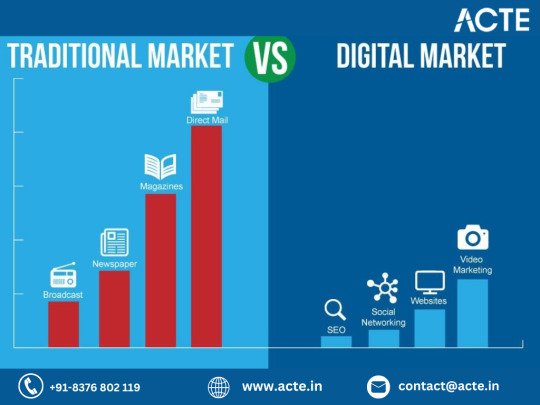
1. Cost-Effectiveness: Maximizing ROI
Digital marketing offers a remarkable advantage in terms of cost-effectiveness compared to traditional marketing avenues. While traditional methods such as print or television advertising often require substantial financial investments, digital marketing enables businesses to reach a wider audience at a fraction of the cost. Through platforms like social media advertising and email campaigns, businesses can allocate their budgets more efficiently, maximizing their return on investment (ROI).
2. Targeted Audience Reach: Precision Marketing
One of the most significant advantages of digital marketing is its ability to precisely target specific demographics, interests, and behaviors of the audience. Unlike traditional marketing approaches, which cast a wide net, digital marketing allows businesses to tailor their messages to reach the most relevant audience segments. Whether it's through Google Ads or Facebook Ads, marketers can refine their targeting parameters to ensure that their campaigns resonate with the right people, leading to higher conversion rates and engagement levels.
3. Measurable Results: Data-Driven Insights
Digital marketing provides unparalleled access to real-time analytics and insights, allowing businesses to gauge the effectiveness of their campaigns with precision. Unlike traditional methods, where tracking performance can be challenging, digital marketing offers comprehensive metrics such as website traffic, conversion rates, and engagement metrics. Armed with this data, marketers can make informed decisions, optimize their strategies, and refine their campaigns to achieve better results over time.
4. Global Reach: Breaking Geographical Barriers
With digital marketing, geographical limitations become a thing of the past. Unlike traditional methods confined to specific regions or markets, digital marketing enables businesses to reach a global audience seamlessly. This level of accessibility is particularly beneficial for small businesses and startups seeking to expand their reach beyond local boundaries without the need for extensive resources.
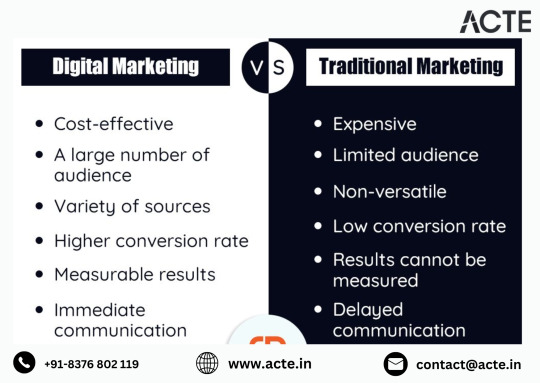
5. Interactivity and Engagement: Fostering Connections
Digital marketing thrives on interactivity, providing numerous opportunities for businesses to engage with their audience on a deeper level. Whether it's through interactive content formats like videos, quizzes, or polls, digital marketing encourages active participation, fostering stronger connections between brands and consumers. This heightened engagement not only enhances brand loyalty but also contributes to increased customer retention rates over time.
6. Flexibility and Adaptability: Agile Marketing Strategies
In the fast-paced digital landscape, adaptability is key to success. Digital marketing offers unparalleled flexibility, allowing businesses to pivot and adjust their strategies in response to real-time data and market trends. Whether it's tweaking ad creatives, refining targeting parameters, or experimenting with new channels, digital marketers have the agility to optimize campaigns on the fly, maximizing their impact and effectiveness.
7. Brand Building and Authority: Establishing Credibility
Through content marketing, social media engagement, and online PR efforts, digital marketing plays a pivotal role in building brand authority and credibility. By consistently delivering valuable and relevant content to their audience, businesses can position themselves as authoritative voices in their respective industries. This, in turn, fosters trust and credibility among consumers, ultimately strengthening the brand's reputation and positioning it as a leader in the market.
8. Accessibility: Leveling the Playing Field
Perhaps one of the most compelling aspects of digital marketing is its accessibility to businesses of all sizes. Unlike traditional methods that often favor large corporations with hefty budgets, digital marketing levels the playing field, enabling even small businesses to compete on a global scale. Moreover, digital channels offer unparalleled accessibility, allowing businesses to be available to their customers 24/7, enhancing convenience and satisfaction.
In conclusion, the advantages of digital marketing over traditional methods are undeniable. From its cost-effectiveness and precise targeting capabilities to its real-time analytics and global reach, digital marketing empowers businesses to connect with their audience in a meaningful way. By embracing the power of digital marketing, businesses can unlock endless opportunities for growth, innovation, and success in today's digital age.
#tech#training#digital marketing#digital marketing company#email marketing#digital marketing course#online marketing#search engine optimization#seo#seo services
3 notes
·
View notes
Text
Unlocking Success: The Role of a Small Business Marketing Consultant
Are you a small business owner aiming to navigate the ever-changing landscape of marketing? 🌱 As the digital age transforms how we reach customers, the expertise of a small business marketing consultant can be a game-changer. Let's delve into the world of small business marketing and explore why consultants are essential partners in your journey towards success.
The Evolving Marketing Landscape 🌍
In today's competitive market, businesses, especially small ventures, face unique challenges in reaching their target audience. Traditional methods like print ads or cold calls no longer suffice. 📰 Enter the digital revolution, where consumers are just a click away from endless choices. A skilled marketing consultant understands this shift and can craft strategies tailored to your specific needs.

What Does a Small Business Marketing Consultant Do? 🧐
Think of a marketing consultant as your business's personal strategist. Their role is multi-faceted:
Market Analysis: Consultants analyze your industry, competitors, and target market to identify opportunities.
Strategy Development: They design customized marketing plans aligned with your business goals, utilizing digital tools and traditional methods.
Execution and Optimization: Consultants implement and refine campaigns, adjusting strategies based on data insights to maximize ROI.
Why Hire a Consultant? 💼
Expertise
Consultants bring specialized knowledge and experience. They keep up with industry trends, digital marketing algorithms, and consumer behavior.
Cost-Effective
Rather than hiring a full-time marketing team, consultants offer flexible services, reducing overhead costs.
Fresh Perspective
An outsider's viewpoint can uncover blind spots and offer creative solutions.
Time-Saving
Outsourcing marketing tasks frees up your time to focus on core business activities.

Finding the Right Consultant 🌟
When seeking a marketing consultant, consider these tips:
Reputation: Look for testimonials and case studies showcasing past success.
Communication: Ensure they understand your vision and can explain strategies clearly.
Customized Approach: Avoid one-size-fits-all solutions; your business is unique!
The Impact on Your Business 📈
A skilled consultant can yield significant benefits:
Increased Visibility: Reach more customers and enhance brand awareness.
Higher Conversion Rates: Targeted strategies lead to better-quality leads.
Long-Term Growth: Sustainable marketing plans lay the groundwork for future success.
Partner with In The Willow 🌿
At In The Willow, we understand the power of effective marketing for small businesses. Our team of seasoned consultants is dedicated to helping your business thrive in today's dynamic marketplace. 🚀
Ready to Grow? Let's Connect!
Take your business to new heights with our small business marketing consultancy services. Contact us today to schedule a consultation and discover how In The Willow can transform your marketing strategy. 🌟
Transform your marketing journey with In The Willow! 🌿✨
🌿 Business Name: In The Willow
📍 Business Address: 1/5 Rebellion Cct, Beaumont Hills, NSW, 2155
📞 Business Phone: +61 439-322-229
🌐 Website: https://inthewillow.au/
⏰ Hours of Operation: Monday-Friday (8am-6pm)
🔗 Social Links:
Facebook: https://www.facebook.com/inthewillowconsultant%20
LinkedIn: https://www.linkedin.com/company/in-the-willow/
2 notes
·
View notes
Text
How Social Media Marketing Is Different From Traditional Marketing

The marketing world has undergone a significant transformation in recent times. While traditional marketing channels like print, television, and radio still hold value, the rise of social media has opened a dynamic new avenue for businesses to connect with their target audience.
This article delves into the key differences between social media marketing and traditional marketing, highlighting the unique strengths and considerations of each approach.
Reach and Audience Targeting
· Traditional Marketing: Relies on demographics and broadcasted messages. Newspapers, magazines, and television cater to a general audience within a specific area. Targeting specific demographics can be achieved through strategic ad placement, but true individualization is limited.
· Social Media Marketing: Enables laser-focused targeting. Platforms like Facebook and Instagram allow marketers to target users based on a multitude of factors, including age, location, interests, and online behavior. This granular targeting ensures messages reach the most relevant audience segment, maximizing campaign effectiveness.
Interaction and Engagement
· Traditional Marketing: Primarily a one-way communication channel. Print ads, billboards, and even television commercials are delivered without the ability for immediate audience response.
· Social Media Marketing: Fosters two-way communication and engagement. Social media platforms provide a space for direct interaction between brands and their audience. Companies can respond to comments and messages, answer questions, and address concerns in real time, fostering a sense of community and loyalty.
Content and Creativity
· Traditional Marketing: Content is static and limited by format. Print ads rely on visuals and text, while television commercials are restricted by time constraints.
· Social Media Marketing: Offers a diverse range of content formats. Businesses can leverage images, videos, live streams, and even interactive polls and quizzes to capture audience attention and deliver their message creatively and engagingly.
Cost and Measurement
· Traditional Marketing: Costs can be high, particularly for prime-time television slots or large-scale print campaigns. Measuring the return on investment (ROI) can be challenging, often relying on estimates and indirect metrics.
· Social Media Marketing: Offers a more cost-effective approach. Many social media platforms provide free business accounts, and paid advertising options are often flexible and budget-friendly. Tracking campaign performance is significantly easier with built-in analytics that provides insights into reach, engagement, and conversions.
Data Analytics
· Traditional Marketing: Limited data available to measure campaign effectiveness. Traditional methods often rely on estimates and indirect metrics like website traffic fluctuations or an increase in sales calls.
· Social Media Marketing: Provides comprehensive data and analytics. Platforms offer insights into impressions, engagement metrics (likes, comments, shares), website clicks, and even conversion rates. This data allows marketers to refine their strategy, optimize content, and measure the true impact of their social media efforts.
Crisis Management and Brand Reputation
· Traditional Marketing: Limited ability to address negative feedback or public relations issues promptly. Responding to criticism in print or television ads often requires time and additional resources.
· Social Media Marketing: Enables real-time crisis management. Businesses can directly address customer concerns and negative feedback on social media platforms, allowing them to control the narrative and minimize potential damage to their brand reputation.
Additional Considerations and The Future of Marketing
While the core differences between social media marketing and traditional marketing have been addressed, here are some additional factors to consider:
Integration and Cohesiveness:
· Combining traditional and social media marketing efforts can create a powerful synergy. Traditional channels can be used to drive users to social media platforms, where deeper engagement and conversions can occur.
· Consistency in messaging and brand identity across all marketing channels is crucial for building a strong brand presence.
Rise of Influencer Marketing:
· Social media has led to the rise of influencer marketing, where businesses collaborate with individuals who have built a large and engaged online audience.
· Influencer marketing can be a highly effective way to reach a targeted audience and leverage the credibility and trust established by the influencer.
Evolving Social Media Landscape:
· Social media platforms are constantly evolving, with new features and functionalities emerging regularly. Marketers need to stay up-to-date with these changes to adapt their strategies and ensure they are using the latest tools and trends to their advantage.
Focus on User-Generated Content:
· Encouraging user-generated content (UGC) through contests, hashtags, and interactive campaigns can be a powerful social media marketing strategy.
· UGC fosters a sense of community, increases brand authenticity, and allows businesses to leverage the creativity and reach of their audience.
The Future of Marketing: Embracing Personalization
Looking ahead, the future of marketing lies in personalization.
· By leveraging the vast amount of data available through social media and other digital channels, businesses can tailor their content and messaging to individual user preferences and needs.
· This level of personalization will be key to building stronger customer relationships and driving engagement in an increasingly competitive marketplace.
Conclusion:
Social media marketing has revolutionized the way businesses connect with their audience. While traditional marketing channels still hold value, the ability to target specific demographics, foster two-way communication, and measure campaign performance in real time makes social media an essential element of any modern marketing strategy.
By embracing the unique strengths of both traditional and social media marketing, businesses can create a comprehensive strategy that drives brand awareness, audience engagement, and ultimately, business growth.
3 notes
·
View notes
Text
Maximizing Reach: The Ultimate Guide to Facebook Marketing
Discover the secrets to dominating Facebook marketing and reaching a wider audience with our comprehensive guide to success!

Image courtesy of Andrea Piacquadio via Pexels
Table of Contents
Understanding Your Audience on Facebook and Instagram
Crafting Engaging Content for Facebook and Instagram
Leveraging Ads on Facebook and Instagram
Building a Strong Social Media Presence
Collaborating with Influencers on Facebook and Instagram
Conclusion
Hey there, digital marketing enthusiasts! We all know that Facebook and Instagram are prime platforms for growing your business and connecting with your audience. Today, we're diving deep into how you can make the most of your digital marketing strategies on these social media giants. Let's get started!
Understanding Your Audience on Facebook and Instagram
When it comes to reaching your target audience on Facebook and Instagram, knowing who you're talking to is key. Facebook is home to a diverse user base, with over 70% of adults in the US using the platform. On the other hand, Instagram skews younger, with a majority of users falling in the under-35 age group. By understanding the demographics of each platform, you can tailor your content to appeal to the right audience.
Stay Connected and Boost Engagement with Our Newsletter!
Get exclusive tips and strategies for maximizing your Facebook marketing reach.
Start Now
Crafting Engaging Content for Facebook and Instagram
Creating content that captures the attention of your audience is essential for digital marketing success. On Facebook, eye-catching visuals and compelling copy can help your posts stand out in users' crowded news feeds. Instagram, being a visual-first platform, thrives on stunning imagery and engaging videos. Make sure to use high-quality visuals and incorporate storytelling to draw your audience in.
Learn how to maximize your reach on Facebook and watch your business soar! [insert link] #facebookmarketing #socialmediatips
Leveraging Ads on Facebook and Instagram
Advertising on Facebook and Instagram can supercharge your digital marketing efforts. Facebook's robust ad platform allows you to target specific demographics, interests, and behaviors, ensuring your ads reach the right people. Instagram ads, seamlessly integrated into users' feeds, can help increase brand visibility and drive traffic to your website. Experiment with different ad formats and targeting options to find what works best for your business.
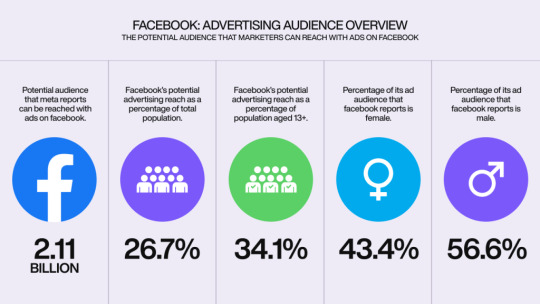
Image courtesy of www.adspaceagency.com via Google Images
Building a Strong Social Media Presence
Consistency is key when it comes to building a strong social media presence. Regularly posting content on Facebook and Instagram keeps your audience engaged and interested in what you have to say. Interacting with your followers through comments, messages, and stories humanizes your brand and fosters a sense of community. Don't forget to track your performance using analytics to understand what content resonates with your audience.
Collaborating with Influencers on Facebook and Instagram
Partnering with influencers can help amplify your brand's reach on Facebook and Instagram. Influencers have dedicated followings who trust their recommendations, making them powerful advocates for your products or services. When selecting influencers to collaborate with, consider factors such as their niche, engagement rates, and authenticity. Measure the success of influencer partnerships by tracking metrics like engagement, reach, and conversions.
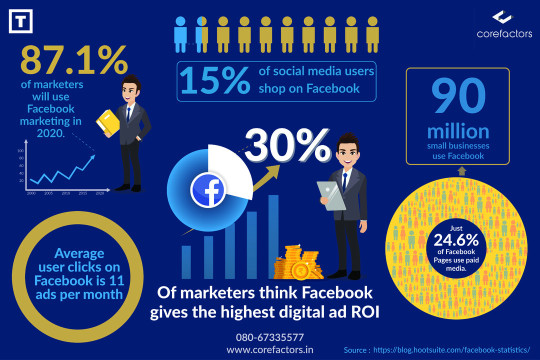
Image courtesy of www.linkedin.com via Google Images
Stay Connected and Boost Engagement with Our Newsletter!
Get exclusive tips and strategies for maximizing your Facebook marketing reach.
Conclusion
So there you have it - the ultimate guide to maximizing your digital marketing strategies on Facebook and Instagram. By understanding your audience, crafting engaging content, leveraging ads, building a strong social media presence, and collaborating with influencers, you can take your digital marketing game to the next level. Remember, digital marketing is all about experimentation and adaptation, so don't be afraid to try new things and pivot your strategies based on what works best for your business. Happy marketing!
2 notes
·
View notes
Text
Guide to Sales Funnels for Digital Marketing
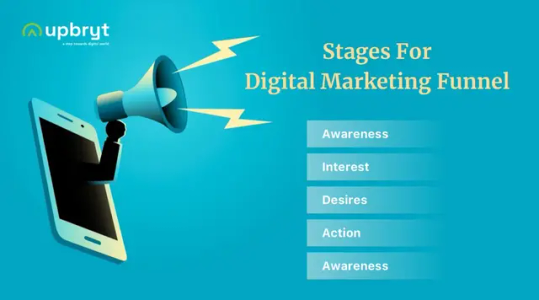
How to Build a Digital Marketing Funnel to Automate Sales Outreach
Digital marketing has altered how both big and small businesses interact with their clients and generated more revenue. The options are unlimited with all the numerous platforms that are accessible for internet marketing.
And if you can successfully automate the lead generation and sales process to the greatest extent feasible, it will reduce a lot of the challenging labor you probably anticipate having to do.
We’ll discuss what a marketing funnel is, the various elements and procedures you must put in place to have it function flawlessly for you, and how to get ready to use it on your own to give your business a significant possibility to be a real player in your industry.
An Explanation Of A Marketing Funnel
Automation of the marketing funnel is the process of generating leads with technology (rather than through human processes) and converting those leads into repeat consumers. Increased conversion rates, improved client retention, lower labor expenses, and increased efficiency are just a few of the many advantages associated with this kind of automation.
A funnel’s objective is to efficiently guide prospects from awareness to conversion. This means that a well-designed system can raise your conversion rate, raise your revenue, and do so while reducing on unneeded expenses.
Which Steps Define A Digital Marketing Funnel?
To lead and manage prospects through the customer experience, a straightforward digital marketing funnel comprises three stages. Here is an overview.
Top of the funnel: Present the company, raise awareness, and pique interest
Provide value: speak to problems, and offer remedies in the middle of the funnel.
Bottom of the Funnel: Increase income, purchases, and subscriptions with timely deals.
Even though funnels typically contain three stages, making a sale doesn’t always require just those three steps. In the middle step of the funnel, they frequently comprise one or more rounds of remarketing or lead nurturing.
To add more touchpoints, many funnels also have numerous channels. Yours might include paid Facebook ads, SMS marketing, email marketing, pay-per-click (PPC) ads, organic social media, or content marketing.
Visit this website for complete details...
Digital Marketing
#digitalmarketing#marketing#digital marketing agency#digital marketing services#good service#online marketing#seo services#digital marketing#search engine optimization#social media marketing
3 notes
·
View notes
Text
Promote Finance | PPC for Finance| Online Advertising Platforms
In today's fast-paced world, financial stability is a key aspect of a secure future. Whether you're an individual, a business owner, or a financial institution, Promote Finance effectively is essential for growth and prosperity. In this comprehensive guide, we'll delve into the strategies, tactics, and tools you need to promote finance successfully and pave the way for a brighter financial future.
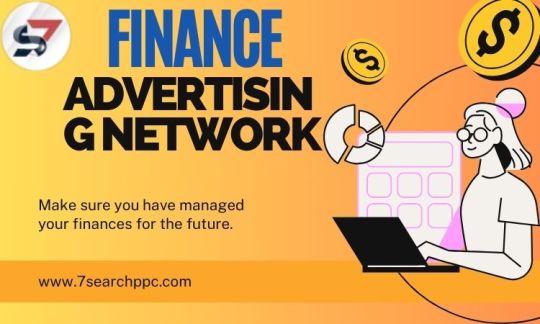
Understanding the Importance of Financial Promotion
Promoting finance goes beyond mere advertising. It involves educating, informing, and empowering individuals and businesses to make sound financial decisions. By promoting Financial Advertising effectively, you can:
1. Increase Financial Literacy: Educate individuals about financial concepts, tools, and strategies to empower them to make informed decisions.
2. Drive Business Growth: Attract new customers, retain existing ones, and expand your market reach by showcasing your financial products and services.
3. Build Trust and Credibility: Establish yourself as a reliable and trustworthy authority in the financial industry, fostering long-term relationships with your audience.
4. Foster Economic Stability: Contribute to overall economic stability by promoting responsible financial practices and investment opportunities.
Crafting Compelling Financial Content
Content lies at the heart of any successful promotion financial services ads strategy. Whether it's blog posts, articles, videos, or social media updates, compelling content can captivate your audience and drive engagement. Here are some tips for creating impactful financial content:
1. Know Your Audience: Understand the demographics, interests, and pain points of your target audience to tailor your content to their needs.
2. Provide Value: Offer practical tips, insights, and advice that resonate with your audience and address their financial concerns.
3. Be Authentic: Share real-life stories, case studies, and examples to make your content relatable and authentic.
4. Optimize for SEO: Use relevant keywords, optimize meta tags, and create high-quality content that ranks well in search engine results.
5. Utilize Multimedia: Incorporate visuals, infographics, and videos to enhance the appeal and accessibility of your content.
Leveraging Social Media for Financial Promotion
Social media platforms offer unparalleled opportunities for reaching and engaging with your target audience. By leveraging social media effectively, you can amplify your financial promotion, online advertising efforts and connect with potential customers on a more personal level. Here's how to make the most of social media for promoting finance:
1. Choose the Right Platforms: Identify the social media platforms where your target audience is most active and establish a strong presence on those channels.
2. Share Valuable Content: Regularly post informative articles, tips, and updates related to finance to keep your audience engaged and informed.
3. Engage with Your Audience: Respond to comments, messages, and inquiries promptly, and actively participate in discussions to build rapport with your followers.
4. Use Paid Advertising: Explore paid advertising options such as sponsored posts, promoted tweets, and Facebook ads to expand your reach and target specific demographics.
5. Monitor and Analyze Performance: Track key metrics such as engagement, reach, and conversion rates to evaluate the effectiveness of your social media efforts and make data-driven decisions.
Partnering with Influencers and Industry Experts
Collaborating with influencers and industry experts can significantly enhance your credibility and reach in the financial space. Whether it's partnering with popular bloggers, advertise financial business, or industry thought leaders, influencer marketing can help you connect with a wider audience and gain valuable endorsements. Here's how to effectively leverage influencer partnerships for financial promotion:
1. Identify Relevant Influencers: Research and identify influencers who resonate with your target audience and align with your brand values and messaging.
2. Reach Out and Build Relationships: Reach out to potential influencers through personalized messages or emails, and nurture relationships built on mutual trust and respect.
3. Offer Value: Provide influencers with valuable content, resources, or exclusive offers to incentivize them to promote your financial services.
4. Track and Measure Results: Monitor the performance of influencer campaigns using tracking links, promo codes, or referral codes, and analyze key metrics to assess their impact on your promotion efforts.
5. Maintain Long-Term Partnerships: Cultivate long-term partnerships with influencers who consistently deliver results and continue to engage with your audience effectively.
Harnessing the Power of Email Marketing
Email marketing remains one of the most effective tools for promoting finance and nurturing customer relationships. By delivering targeted, personalized messages directly to your audience's inbox, you can drive engagement, build trust, and ads for financial services, drive conversions. Here are some best practices for harnessing the power of email marketing in your financial promotion strategy:
1. Build a Quality Email List: Focus on building a quality email list comprised of individuals who have opted in to receive communications from you, ensuring higher open and click-through rates.
2. Segment Your Audience: Segment your email list based on demographics, interests, and behavior to deliver more relevant and personalized content to different segments of your audience.
3. Craft Compelling Content: Create compelling email content that provides value, addresses pain points, and offers solutions to your audience's ppc for finance needs and challenges.
4. Optimize for Mobile: Ensure that your email campaigns are mobile-friendly and optimized for viewing on smartphones and tablets, as a significant portion of your audience likely accesses their emails on mobile devices.
5. Test and Iterate: Continuously test different subject lines, email formats, and calls to action to optimize the performance of your email campaigns and maximize engagement and conversions.
Embracing Innovation and Technology
Innovation and technology are driving significant transformations in the financial industry, presenting new opportunities for promoting ppc for financial business and reaching customers in innovative ways. By embracing cutting-edge technologies and staying ahead of the curve, you can differentiate yourself from competitors and position your brand as a leader in the financial space. Here are some innovative strategies and technologies to consider incorporating into your financial promotion efforts:
1. Blockchain and Cryptocurrency: Explore opportunities in blockchain technology and cryptocurrency to offer innovative financial products and services that cater to emerging trends and customer preferences.
2. Robo-Advisors and AI-Powered Tools: Leverage robo-advisors, artificial intelligence, and machine learning algorithms to provide personalized financial advice, automate investment management, and enhance the customer experience.
3. Fintech Partnerships: Collaborate with fintech startups and technology companies to integrate cutting-edge solutions such as mobile payment systems, peer-to-peer lending platforms, and digital wallets into your offerings.
4. Virtual Reality and Augmented Reality: Harness the immersive capabilities of virtual reality and augmented reality to create engaging educational experiences, virtual tours of financial advertising, and interactive financial planning tools.
5. Voice Search and Smart Assistants: Optimize your digital presence for voice search and smart assistants such as Siri, Alexa, and Google Assistant to make it easier for customers to find and access your financial products and services using voice commands.
Conclusion
Promote Finance effectively requires a strategic approach, leveraging a combination of traditional and digital marketing tactics, as well as innovative technologies and partnerships. By understanding the needs and preferences of your target audience, crafting compelling content, and utilizing the right channels and tools, you can elevate your financial promotion efforts and drive sustainable growth and success. Embrace the opportunities presented by the evolving landscape of the financial industry, and empower individuals and businesses to achieve their financial goals and aspirations. Together, let's unlock the potential of finance and pave the way for a brighter financial future for all.
2 notes
·
View notes
Text
How Meta Ads Help in Marketing Your Business
As a expert in Imagency media i will give complete guidlines on this...
In today's digital landscape, businesses must leverage effective advertising strategies to reach their target audiences. Meta Ads, formerly known as Facebook Ads, have become a powerful tool for marketers, offering various features and benefits that can enhance business visibility and drive results. In this article, we’ll explore how Meta Ads can significantly improve your marketing efforts.
1. Extensive Audience Reach
Meta platforms, including Facebook and Instagram, boast billions of active users worldwide. This vast user base provides businesses with an unparalleled opportunity to reach potential customers across different demographics and geographic locations. By utilizing Meta Ads, businesses can connect with a diverse audience and increase their brand visibility.
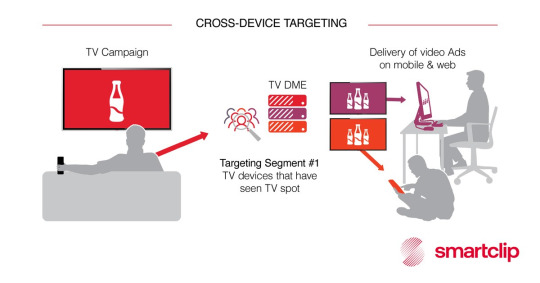
2. Advanced Targeting Capabilities
One of the standout features of Meta Ads is their sophisticated targeting options. Advertisers can reach specific audiences based on various criteria, including:
Demographics: Age, gender, location, and language.
Interests: Hobbies, preferences, and behaviors.
Custom Audiences: Targeting users who have previously interacted with your business, such as website visitors or past customers.
Lookalike Audiences: Finding new customers similar to your existing audience.
This level of precision ensures that your ads are seen by the most relevant users, increasing the likelihood of engagement and conversions.
3. Diverse Ad Formats
Meta Ads support a wide range of ad formats, allowing businesses to choose the best options for their campaigns. Some popular formats include:
Image Ads: Simple yet effective, ideal for showcasing products.
Video Ads: Engaging content that captures attention and tells a story.
Carousel Ads: Multiple images or videos that users can swipe through, perfect for showcasing a collection.
Stories Ads: Full-screen vertical ads that appear between user stories, providing a seamless viewing experience.
This variety enables businesses to create compelling ads that re
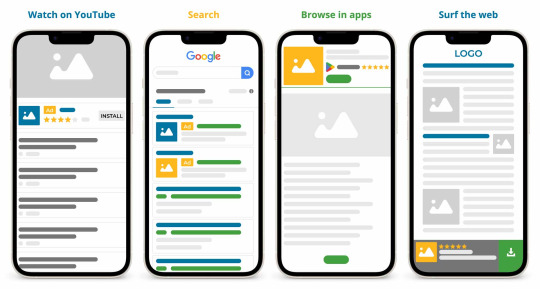
sonate with their target audience.
4. Cost-Effective Marketing
Meta Ads operate on a bidding system, allowing businesses to set their budgets and control their advertising costs. This flexibility makes it possible for companies of all sizes to run effective campaigns. Advertisers can choose between cost-per-click (CPC) and cost-per-impression (CPM) models, ensuring that they can maximize their return on investment.
5. Enhanced Brand Awareness
Meta Ads are an excellent tool for building brand awareness. By consistently displaying ads to your target audience, you can increase visibility and recognition of your brand. Engaging ad formats, such as videos and interactive content, can further enhance user engagement, fostering a stronger connection between the audience and your brand.
6. Retargeting Capabilities
Retargeting is a powerful strategy that allows businesses to reconnect with users who have previously interacted with their brand. With Meta Ads, you can create custom audiences to retarget users who visited your website, added products to their cart, or engaged with your content. This approach helps nurture leads and increases the chances of conversion by reminding potential customers of their interest in your products or services.
7. Comprehensive Analytics and Insights
Meta Ads provide robust analytics tools that allow businesses to track the performance of their campaigns. Advertisers can access detailed metrics, such as reach, engagement, clicks, and conversion rates. This data is invaluable for understanding the effectiveness of your ads and making data-driven decisions to optimize future campaigns.
8. Seamless Integration with E-commerce
For e-commerce businesses, Meta Ads offer features like product catalogs and shopping ads, making it easy to showcase products directly on the platform. These features allow customers to browse and shop without leaving the app, creating a seamless shopping experience and driving sales.
Conclusion
Incorporating Meta Ads into your marketing strategy can significantly enhance your business’s online presence and drive meaningful results. With extensive reach, advanced targeting options, diverse ad formats, and powerful analytics, Meta Ads offer a comprehensive solution for businesses looking to grow and engage with their audience. By leveraging these tools effectively, you can maximize your marketing efforts and achieve your business goals.
Contact today for meta ads services

3 notes
·
View notes
Text
Maximizing Facebook Marketing for Rapid Brand Growth
In today's fast-paced digital landscape, leveraging social media platforms like Facebook has become essential for brands aiming to achieve rapid growth and widespread visibility. With its extensive user base and robust advertising features, Facebook offers unparalleled opportunities for businesses to connect with their target audience effectively.

Here's a comprehensive guide on how to make the best use of Facebook marketing to market a brand in a short time:
1. Define Clear Objectives:
Before diving into Facebook marketing, outline specific goals such as increasing brand awareness, driving website traffic, generating leads, or boosting sales.

Clear objectives will guide your marketing strategies and help measure success accurately.
2. Create Compelling Content:
Engaging content is the cornerstone of successful Facebook marketing. Develop high-quality visuals, videos, and written posts that resonate with your audience's interests, pain points, and aspirations. Incorporate storytelling elements to make your brand memorable and relatable.
3. Optimize Page Setup:
Ensure your Facebook business page is fully optimized with a compelling profile picture, cover photo, and a concise yet informative "About" section. Provide relevant contact information and include keywords for improved search visibility.
4. Utilize Facebook Ads:
Facebook's robust advertising platform allows brands to target specific demographics, interests, behaviors, and locations.

Experiment with different ad formats such as carousel ads, video ads, and slideshow ads to determine which resonates best with your audience. Set clear budgets and monitor ad performance regularly to optimize campaigns for maximum impact.
5. Harness the Power of Video:
Video content continues to dominate social media platforms, and Facebook is no exception.

Incorporate video into your marketing strategy to convey your brand message in a more dynamic and engaging way. Whether it's product demos, behind-the-scenes footage, or customer testimonials, leverage video to captivate your audience's attention.
6. Engage with Your Audience:
Actively engage with your audience by responding to comments, messages, and reviews promptly.

Encourage user-generated content through contests, polls, and user testimonials to foster a sense of community and loyalty around your brand.
7. Leverage Facebook Groups:
Join relevant Facebook groups within your niche and participate in discussions to establish thought leadership and build relationships with potential customers.

Share valuable insights, answer questions, and subtly promote your products or services without being overly promotional.
8. Implement Retargeting Strategies:
Implement Facebook Pixel on your website to track user interactions and behavior.

Utilize retargeting ads to re-engage website visitors who have shown interest in your products or services but haven't made a purchase yet. Personalize ad content based on their previous interactions to encourage conversion.
9. Monitor and Analyze Performance:
Regularly monitor key metrics such as reach, engagement, click-through rates, and conversion rates to gauge the effectiveness of your Facebook marketing efforts.

Use data-driven insights to refine your strategies, experiment with new approaches, and optimize performance over time.
10. Stay Updated with Trends and Algorithm Changes:
Keep abreast of the latest Facebook trends, algorithm changes, and best practices to stay ahead of the competition.

Adapt your strategies accordingly to ensure continued success in reaching and engaging your target audience.
By following these tips and leveraging the full potential of Facebook marketing, brands can effectively promote their products or services, expand their reach, and achieve rapid growth within a short period. Consistency, creativity, and strategic targeting are key to maximizing the impact of Facebook marketing campaigns and establishing a strong brand presence in today's competitive digital landscape.
#digital marketing#digital illustration#online#online marketing#onlinemarketplace#facebook marketing#facebook#facebook ads#facebook advertising#digital business#website seo#seo services#seo expert#influencers#influencer#socialmedia#facebook ad boost#linkedin#social networks#facebook ad agency services#whatsappnumberlist
3 notes
·
View notes
Text
The Digital Marketing Roadmap: Accelerating Business Growth in the Digital Age
In today's fast-paced digital landscape, the role of digital marketing in business growth cannot be overstated. As businesses strive to stay competitive and relevant in an increasingly online world, leveraging the power of digital marketing has become essential. In this comprehensive guide, we'll explore how businesses can harness the potential of digital marketing to propel their growth, step by step.

Introduction: Navigating the Digital Frontier
The digital age has transformed the way businesses operate and interact with their customers. With the rise of online platforms and digital channels, businesses now have unprecedented opportunities to connect with their target audience, expand their reach, and drive engagement. Digital marketing has emerged as a strategic imperative for businesses looking to thrive in this digital landscape. In this guide, we'll delve into the key elements of digital marketing and how businesses can leverage them to fuel their growth journey.
Expanding Reach: Casting a Wide Net
At the heart of digital marketing lies the ability to expand reach and connect with a global audience. Through websites, social media platforms, and various online channels, businesses can extend their reach beyond geographical boundaries and tap into new markets. A well-designed website serves as the cornerstone of a business's online presence, providing a central hub for customers to learn about products and services, make purchases, and interact with the brand. Social media platforms offer additional avenues for engagement, allowing businesses to reach and engage with their target audience on platforms like Facebook, Instagram, Twitter, and LinkedIn.
Targeted Audience: Reaching the Right People
One of the defining features of digital marketing is its ability to target specific audience segments with precision. Platforms like Google Ads, Facebook Ads, and LinkedIn Ads offer advanced targeting options that enable businesses to tailor their marketing messages to specific demographics, interests, and behaviors. By understanding their target audience and crafting tailored messaging, businesses can increase the relevance and effectiveness of their marketing efforts, leading to higher conversion rates and a better return on investment.
Lead Generation: Cultivating Growth Opportunities
Effective lead generation is the lifeblood of business growth, and digital marketing offers powerful tools and strategies for generating high-quality leads. Search engine optimization (SEO), content marketing, and email marketing are among the most effective methods for attracting and nurturing leads. By optimizing their website for search engines, creating valuable content that addresses the needs and interests of their target audience, and implementing lead capture tactics like email opt-ins and gated content, businesses can attract and nurture leads through the sales funnel, ultimately leading to increased conversions and revenue.

Brand Building: Establishing Authority and Trust
Building a strong brand presence is essential for long-term success in the digital age. Digital marketing provides businesses with powerful tools for building brand awareness, establishing authority, and fostering trust with their target audience. Content marketing, social media engagement, and thought leadership initiatives are effective strategies for showcasing expertise, sharing valuable insights, and engaging with the audience on a personal level. By consistently delivering valuable content and engaging with their audience authentically, businesses can strengthen their brand identity, foster trust and credibility, and cultivate lasting relationships with their customers.
Customer Engagement: Fostering Relationships and Loyalty
Direct communication channels offered by digital marketing platforms enable businesses to engage with their audience in real-time, fostering meaningful relationships and encouraging loyalty. Social media platforms, email newsletters, live chat, and online communities provide valuable opportunities for businesses to connect with their customers, address inquiries, and gather feedback. By delivering exceptional customer experiences and providing valuable content consistently, businesses can encourage loyalty, advocacy, and repeat business, driving long-term growth and profitability.
Performance Optimization: Data-Driven Decision Making
One of the key advantages of digital marketing is its measurability. With advanced analytics tools and data-driven insights, businesses can track the performance of their marketing campaigns in real-time and make informed decisions to optimize their strategies. By analyzing key metrics such as website traffic, conversion rates, and customer engagement, businesses can identify areas for improvement and refine their approach to maximize results. This iterative approach to optimization ensures that resources are allocated effectively, driving continuous improvement and growth.
Conclusion: Charting Your Course to Success
In conclusion, digital marketing offers businesses a powerful roadmap for accelerating growth and achieving success in the digital age. By expanding their reach, targeting the right audience, generating leads, building brand authority, fostering customer engagement, and optimizing performance, businesses can leverage digital marketing to unlock their full potential and achieve their growth objectives. Whether you're a small startup or a large enterprise, embracing digital marketing as a strategic imperative can position you for success and propel your growth journey in the dynamic digital landscape.
#tech#training#digital marketing#digital marketing company#digital marketing course#email marketing#online marketing#search engine optimization#seo#seo services
4 notes
·
View notes
Text
From Lead to Conversion the Power of Facebook Lead Ad Notifications

In today's fast-paced digital world, converting leads into paying customers is the ultimate goal for businesses. And when it comes to lead generation, Facebook has emerged as a powerful platform. With its innovative Facebook lead ad notifications feature, Facebook offers a seamless and efficient way to capture and nurture leads. Gone are the days of relying solely on traditional lead generation methods. Now, businesses can take advantage of Facebook's targeted advertising capabilities to reach their ideal audience and gather valuable contact information. But what sets Facebook Lead Ad Notifications apart from other lead generation methods? It's the power of instant communication and timely follow-ups.
By receiving real-time notifications, businesses can respond to leads promptly, increasing the chances of conversion. In this article, we will explore the benefits and strategies behind Facebook Lead Ad Notifications and how they can help businesses supercharge their lead-generation efforts.
How Facebook Lead Ad Notifications Work
Facebook Lead Ad Notifications work by streamlining the lead generation process. When a user clicks on a lead ad, a pre-populated form appears, automatically filling in their contact information from their Facebook profile. This eliminates the need for users to manually enter their details, making the process quick and convenient.
Once a user submits the form, businesses receive a real-time notification containing the lead's information. This allows businesses to respond promptly and engage with the lead while they are still interested. By leveraging the power of instant communication, businesses can establish a connection with the lead and guide them through the conversion process.
Optimizing Lead Ad Notifications for Conversions
To maximize the effectiveness of Facebook Lead Ad Notifications, businesses must optimize their lead ad campaigns. Here are a few strategies to consider:
1. Craft compelling ad copy: The ad copy should clearly communicate the value proposition and entice users to click on the ad. A strong call to action can also help improve conversion rates.
2. Design eye-catching visuals: Visuals play a crucial role in capturing users' attention. High-quality images or videos that resonate with the target audience can significantly boost engagement.
3. Keep forms short and simple: Long and complicated forms tend to deter users from completing the process. By keeping forms concise and only asking for essential information, businesses can improve conversion rates.
4. Offer incentives: To incentivize users to provide their contact information, businesses can offer exclusive discounts, freebies, or valuable content. This can help increase the perceived value of the offer and encourage users to take action.
By implementing these optimization strategies, businesses can ensure that their lead ad campaigns are efficient and effective in driving conversions.
Benefits of Facebook Lead Ads
Facebook Lead Ad Notifications offer several benefits that make them stand out from traditional lead generation methods.
1. Higher conversion rates: With Lead Ad Notifications, the conversion process is streamlined, eliminating the need for users to leave the Facebook platform. This reduces friction and increases the chances of conversion.
2. Increased targeting options: Facebook's robust targeting capabilities allow businesses to reach their ideal audience with precision. By targeting users based on demographics, interests, and behaviors, businesses can ensure that their lead ads are shown to the most relevant prospects.
3. Real-time lead notifications: The real-time nature of lead notifications enables businesses to respond promptly and engage with leads while they are still interested. This can significantly improve the conversion rate and customer satisfaction.
4. Seamless integration with CRM systems: Facebook Lead Ad Notifications can be seamlessly integrated with CRM systems, allowing businesses to automatically sync lead information and streamline their lead nurturing and follow-up processes.
Integrating Lead Ad Notifications with CRM Systems
To fully harness the power of Facebook Lead Ad Notifications, businesses should integrate them with their CRM systems. This integration allows for seamless lead management and facilitates effective lead nurturing.
By automatically syncing lead information from Facebook to the CRM system, businesses can ensure that no leads fall through the cracks. This enables businesses to track and manage leads effectively, assign them to the appropriate sales representatives, and nurture them through personalized communication.
Furthermore, integration with CRM systems allows businesses to automate follow-up processes, ensuring that leads receive timely and relevant information. This automation not only saves time but also improves the overall customer experience, increasing the chances of conversion.
Conclusion:
In today's digital age, businesses need to adapt to the changing landscape of lead generation. Facebook Lead Ad Notifications provide businesses with a powerful tool to capture and convert leads with efficiency and precision.
By leveraging the instant communication and real-time nature of Lead Ad Notifications, businesses can respond promptly to leads and guide them through the conversion process. The seamless integration with CRM systems further streamlines lead management and ensures that no leads are left behind.
Incorporating Facebook Lead Ad Notifications into your lead generation strategy can supercharge your efforts and drive higher conversion rates. So, don't miss out on the power of Facebook Lead Ad Notifications – start capturing and converting leads today!
Read the full article
3 notes
·
View notes
Text
The Evolution and Impact of Digital Marketing.

Introduction
Businesses have seen a paradigm shift in how they communicate with their audience, advertise products, and generate income in the ever expanding digital world. A potent instrument that crosses geographical boundaries and conventional constraints is digital marketing. Businesses now have unparalleled chances to interact with customers in a more efficient and personalized way thanks to the ever-expanding influence of the internet, social media, and technology. This article explores the development and influence of digital marketing, stressing its essential elements, advantages, and effective tactics.
The Evolution of Digital Marketing
1-Search Engine Optimization (SEO):The way that companies show up in search engine results has been transformed by SEO. Businesses may boost their organic search ranks, generating worthwhile traffic and expanding their visibility, by optimizing website content for pertinent keywords and constructing high-quality backlinks.
2-Social Media Marketing: The popularity of websites like Facebook, Instagram, Twitter, and LinkedIn changed how businesses interact with their customers. With the help of social media marketing, businesses can forge sincere connections, share content, and interact with customers in real time.
3- Content Marketing- Creating useful and pertinent content has become essential to digital marketing. Businesses can develop expertise in their sector and cultivate trust among their target audience using blogs, articles, videos, and infographics.
4-Pay-Per-Click Advertising (PPC): PPC advertising enables companies to display ads to their target demographic and only pay when the ad is clicked, as demonstrated by platforms like Google Ads. Budgets for marketing are efficiently allocated thanks to this highly targeted strategy.
The Impact of Digital Marketing
The impact of digital marketing is profound, reshaping the way businesses operate and interact with consumers.
1-Global Reach: The capability of digital marketing to reach a global audience is one of its key benefits. Today's small firm has never-before-seen prospects for growth since it can compete on a global level.
2-Data-Driven Insights : Access to a variety of data from digital marketing is available, and this data may be examined to better understand consumer behavior, preferences, and trends. Businesses may enhance their strategy and make more informed decisions thanks to this data-driven approach.
3- Cost-Effectiveness: Traditional marketing strategies frequently need substantial financial outlays. The return on investment (ROI) is higher with digital marketing since it provides cost-effective alternatives like social media advertising and email campaigns.
4- Personalization: Businesses can tailor their marketing campaigns by using data analysis to deliver relevant offers and information to niche audiences. The engagement and conversion rates of customers are improved by this tailored strategy.
Strategies for Successful Digital Marketing
Achieving success in the realm of digital marketing requires a comprehensive strategy that encompasses various elements:
1- Clear Objectives: Set definite, attainable objectives for your digital marketing campaigns, whether they be to increase website traffic, raise brand awareness, or increase sales.
2- Target Audience Analysis: Recognize the demographics, tastes, and problems of your target audience. Create content and messaging that is specific to their requirements.
3- Content Excellence: Produce valuable material for your audience that is of the highest caliber and relevance. This might encompass articles on blogs, movies, infographics, and more.
4- Data Analysis: Analyze the effectiveness of your digital marketing activities on a regular basis. Track website traffic, conversion rates, and other important information with programs like Google Analytics.
Conclusion
Digital marketing has developed from a fledgling idea to a vital and dynamic tactic that promotes customer interaction and corporate growth. By combining technology, data analysis, and creativity, brands can now communicate with customers in a more personalized way on a global scale. Businesses must modify their tactics to take advantage of the potential of digital marketing and stay ahead in a market that is becoming more and more competitive as the digital landscape continues to change.
2 notes
·
View notes